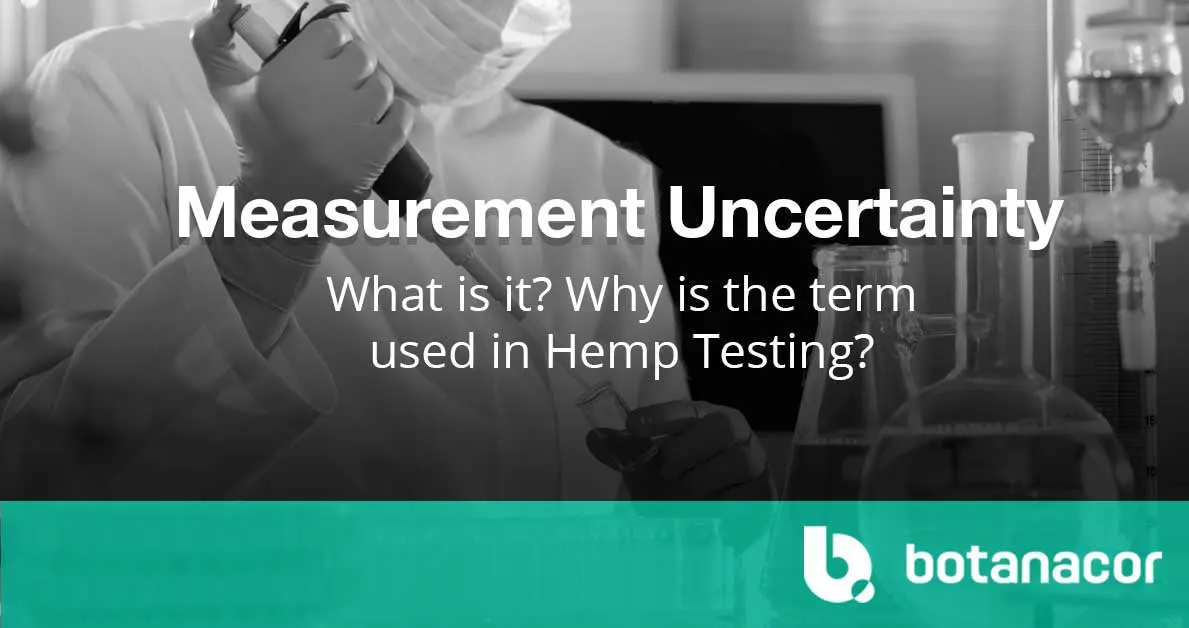What is “Measurement Uncertainty,” and why is the term used in hemp testing?
Hemp-derived CBD companies and their products increasingly face scrutiny from consumers, regulators and stockholders, driven by potential CBD health benefits, industry growth opportunity, and product claims, as well as regulatory oversight. Third party product testing is a critical component of a safe supply chain, and understanding measurement uncertainty is important when assessing results for any tested product.
Recently a report in Hemp Industry Daily’s newsletter talked about the rising number of CBD product lawsuits. These are class action lawsuits, in which the injury is universal and wide-spread, and the awards for the injured are gigantic. The liability risk only drives home how essential it is that a product be tested by an accredited, third-party lab, and that the test results are assured and accurate. One of the important concepts in the presentation of accurate analytical results is measurement uncertainty, and it’s explained herein.
Analytical results are defined as an “estimate” of the analyte you are trying to measure. The estimate comes as a result of comparing your sample to a known concentration of the same analyte. Like any measurement, proper tools and procedures will give you better and better estimates. However, no matter how precise a lab is, there is always a measure of uncertainty in test results. For example, with hemp testing, there is always a range of probable CBD or THC levels that may be reported. The measurement uncertainty is the expression of that range, where the true CBD or THC value can be expected to be within that range with a known probability.
More precisely, a lab result is not a single value but a statistical dispersion of probabilities of the true value, which is also called a spread or variability. For a tested sample, the measurement uncertainty is simply the expression of that dispersion of the values. To really get into the weeds, and go full lab nerd on you, for a test sample, the measurement uncertainty is the standard deviation of probability distribution over all the possible values that could be attributed to the sample. Measurement uncertainty, in collaboration with a robust quality system, allows for the results to be part of an unbroken chain of calibrations, whereby the measurement has traceability to NIST References Standards, and thus allows for the result to be defendable, if it ever had to be, in court.
The scrutiny surrounding label claims and product quality must incorporate the level of measurement uncertainty. If a product claims to have 5 mg of CBD and the lab finds 4.6 mg with a measurement uncertainty of 10%, the claimed value does fall within that spread. So, while you may feel the label was misleading, in fact the claim is supported by the analytical result.
Good labs are aware of their measurement uncertainty, and they take determined steps to tighten the range of possible values through process validation that bring an ever-improving probability of accuracy. This should include validation of the facility, processes, equipment, methods, and systems.

